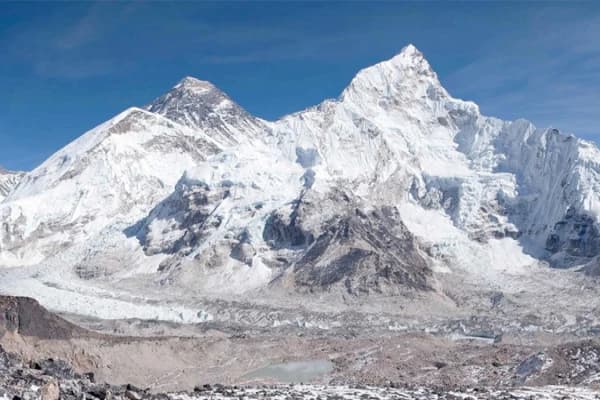The Everest Base Camp (EBC) trek is a dream adventure for many trekkers worldwide. Trekking in December adds a unique charm, offering quieter trails, stunning snowy landscapes, and crisp, clear skies that provide spectacular views of the Himalayan peaks. Though the cold weather presents challenges, the peace and serenity of trekking during this season are well worth the effort.
This detailed guide will cover everything you need about the Everest Base Camp trek in December, including preparation tips, an itinerary, weather conditions, and essential advice to ensure a smooth and enjoyable trek in Nepal.
Why Choose Everest Base Camp Trek in December?
December is one of the most unique months to trek in the Everest Region. Since most trekkers prefer the Everest Base Camp trek in October or the EBC Trek in November, December has fewer crowds, making it easier to enjoy the wilderness without disturbance. Quieter trails also make your connection to the mountains and Sherpa culture more personal.
December's Expectations from the Trek:
- Quieter Trails: The pathways and teahouses will be less crowded with fewer trekkers.
- Spectacular snowy views: Trails are covered in snow, and tall peaks rise against clear blue skies.
- Clear weather: Even though it is cold, December mornings are crisp and clear, offering incredible panoramic views of the Everest region.
For those interested in trekking earlier, the EBC trek in September offers different weather patterns that you can review.
Planning Your Everest Base Camp Trek in December
Understanding the Route
The Everest Base Camp follows a familiar path through the stunning Khumbu region, starting at Lukla. You’ll pass through Sherpa villages, forests, and high-altitude terrains. The trek typically takes 12-14 days and covers around 130 kilometres (80 miles) round trip.
Here’s the standard Everest Base Camp trek itinerary:
Fly from Kathmandu to Lukla (2,840m/9,316ft) and trek to Phakding (2,610m/8,561ft).
Trek from Phakding to Namche Bazaar (3,440m/11,284ft).
Acclimatization day in Namche Bazaar to adjust to the altitude.
Trek from Namche to Tengboche (3,860m/12,661ft).
Trek from Tengboche to Dingboche (4,410m/14,465ft).
Trek from Dingboche to Lobuche (4,910m/16,105ft).
Trek from Lobuche to Gorak Shep (5,140m/16,860ft), hike to Everest Base Camp (5,364m/17,598ft) and back to Gorak Shep.
Hike to Kala Patthar (5,550m/18,204ft) for sunrise views and descend to Pheriche.
Trek from Pheriche to Namche Bazaar.
Trek from Namche to Lukla and fly back to Kathmandu.
This is the best Everest Base Camp trek itinerary for December. It allows for acclimatization and plenty of time to enjoy the views.
Physical Preparation
Trekking in December means colder conditions, so being fit and prepared is essential. Expect to walk 6-8 hours a day on rugged terrain. Include cardio and strength training, focusing on long hikes and building stamina.
Permits Required During The Trek
You’ll need the following permits:
- Sagarmatha National Park Entry Permit
- Khumbu Pasang Lhamu Rural Municipality Permit
You can obtain these permits at the Nepal Tourism Board in Kamaladi, Kathmandu.
Weather and Temperature in December
The temperature in Everest Base Camp in December
December is cold in the Everest region. During the day, temperatures at the lower altitude range from 5°C to 10°C, while at the camp, they are lower than -15°C to -20°C at night.
It is necessary to wear layers, with a base layer and a warm jacket, gloves, and beanie. To make yourself comfortable during the night, you shall need 4-season sleeping bags rated for cold conditions.
Recommended Read: How Cold is Mount Everest
The temperature in Winter on Mount Everest
Winter is one of the coldest conditions to strike Mount Everest. At higher altitudes, the temperature might fall as low as -30°C, and special preparation will be required for gear and clothing for cold-weather trekking.
Recommended Read: Where is Mount Everest Located?
Pros and Cons of Everest Base Camp Trek in December
Pros
- Clear Skies: Crispy and clear weather provides spectacular mountain views.
- Fewer Crowds: Less crowded trails and teahouses offer a peaceful trekking experience.
- Cultural Experience: You might enjoy the local winter festivals and traditions.
Cons
- Cold Weather: Freezing weather requires more preparation and gear.
- Fewer Services: Teahouses and other amenities may be shut down due to the off-season.
- Flight Cancellations: Poor weather conditions could cause delays or cancellations to and from Lukla.
- Cho La Pass in December: Some sections of the trail, such as Cho La Pass, can be challenging or impassable because of snow.
Difficulties You Might Face When Doing the Everest Base Camp Trek in December
You should be prepared for difficulties in Everest Base Camp trekking, including long days of hiking, sometimes extending up to 8 hours, with considerable elevation gains. Trekking poles, high-quality boots, and a good fitness level are essential to manage the route's difficulty effectively.
Altitude Sickness
Altitude sickness is a risk at high elevations regardless of the season. Proper acclimatization is crucial. Pay attention to symptoms like headaches, nausea, and dizziness. If symptoms worsen, descend immediately and seek medical attention.
Difficulties in the Trek Route
Snow and ice can make the trail slippery and more challenging. Crampons and trekking poles can manage these conditions. The cold can also be exhausting; proper attire and accessories are essential.
Accommodation Problems
Because some teahouses close during winter, accommodation options may be minimal. Facilities may be simple, with less heating and small amenities. Along the way, it is essential to organise your stops and confirm the opening of lodges.
Crowds and Cost
Though the number of trekkers is fewer, the cost of trekking in December can also be high because of the availability factor related to some services. Be prepared for possible price increases from guides, porters, and equipment rentals.
Physical Challenge
The temperature conditions add to the physical demands of the trek. One needs to be prepared mentally and physically to tackle harsh conditions like freezing temperatures and possible snowfall.
For a more comfortable option, you can explore the Everest Trek with Helicopter for a quicker and more luxurious experience.
How will the Everest trek accommodation be in December?
Most accommodations have more limited options in December as some teahouses close during winter. The open teahouses offer basic facilities, and rooms may not have heating, or a hot shower may not be available and expensive. It is recommended that sleeping bags rated for cold temperatures be taken.
Hiring Porters and Guides
Hiring a porter and guide for trekking this month is highly advisable. Guides can help with trail conditions, while porters will carry heavy gear so you can focus on the trek. Their expertise during these cold, demanding conditions is invaluable.
For more details on trekking independently, you can check out this comprehensive guide on Can you Trek to Everest Base Camp alone.
The Wildlife and Vegetation of the Everest Region During December
In December, the vegetation is sparse due to the cold weather. The forests of pine and rhododendrons are covered in snow at higher altitudes. Wildlife in the Everest Region is less common in December, but you might still spot Himalayan tahrs, snow leopards, and various bird species adapted to the cold climate.
Things to Bring with You for the Perfect Backpack
When preparing your Everest Base Camp trek packing list, cold-weather gear such as thermal layers, a down jacket, and a high-quality sleeping bag is essential.
Gear and Equipment
- Warm Clothing: Thermal base layers, fleece jackets, down jackets, and waterproof outer layers.
- Trekking Boots: Insulated and waterproof boots with good grip.
- Sleeping Bag: A four-season sleeping bag rated for -20°C (-4°F) or lower.
- Trekking Poles: Useful for balance on snowy and icy trails.
- Crampons: May be necessary for icy sections of the trail.
Personal Items
- Passport and Permits: Always carry your identification and necessary permits.
- Cash: ATMs are unavailable along the trail, so bring enough Nepali rupees.
- Sunscreen and Lip Balm: The sun's rays are more potent at high altitudes, even in winter.
- First Aid Kit: Include altitude sickness medication, pain relievers, and personal medications.
Miscellaneous
- Headlamp: Essential for early starts and power outages.
- Water Purification Tablets: Safe drinking water is crucial.
- High-Energy Snacks: Nuts, energy bars, and chocolate for quick energy boosts.
Final Say
Embarking on the Everest Base Camp trek in December is a remarkable adventure that offers solitude and unparalleled mountain views. While it presents additional challenges due to the cold weather and limited services, with proper preparation and the right mindset, it can be a rewarding experience. If you're seeking a less crowded trail and don't mind braving the cold, December might be the best time for your Everest adventure.
To make your trip even more seamless, consider booking with Real Adventure Nepal, a trusted and experienced trekking agency that offers expertly guided treks. They provide well-structured itineraries, ensuring your adventure is safe and enjoyable, even in the cold December weather.
Explore Everest Region Trekking Packages:
Everest Panorama Trek - 9 Days
Everest Base Camp via Cho La Pass & Gokyo Lakes Trek- 19 Days
Everest View Luxury Lodge Trek - 5 Days
FAQs on Everest Base Camp Trek in December
Can we do the Everest Base Camp Trek in December?
Yes, you can trek to Everest Base Camp in December. While it is colder, December offers clearer skies, fewer crowds, and stunning snow-covered landscapes in the Everest region. However, trekkers should be well-prepared for freezing temperatures and pack the right gear to ensure safety and comfort.
Which month is best for the Everest Base Camp Trek?
The best months for the Everest Base Camp trek are typically October and November, when the weather is clear and dry during autumn. Due to warmer temperatures and blooming rhododendron forests, April and May are also famous. However, December offers a quieter and more serene experience with breathtaking winter scenery.
Do people climb Everest in December?
Climbing Mount Everest Base Camp Trek in December is extremely rare. Winter is not considered a favourable time for a summit attempt due to extreme cold, heavy snowfall, and dangerous conditions on the mountain. Most climbers attempt Everest in the spring (April-May) or autumn (September-November). However, trekking to Everest Base Camp is possible in December.
Do you require a guide for Everest Base Camp Trek?
While it's possible to do the Everest Base Camp trek independently, hiring a guide is highly recommended for safety, navigation, and local insights. A guide can help you manage altitude sickness, assist with accommodation, and provide a deeper understanding of the region's culture and history.
How cold is the trek to Everest Base Camp?
In December, temperatures during the Everest Base Camp trek can be cold, especially at higher altitudes. Daytime temperatures at lower elevations (Lukla, Namche Bazaar) range from 5°C to 10°C (41°F to 50°F). At Everest Base Camp, daytime temperatures hover around -5°C (23°F), and nighttime temperatures can drop from -15°C to -20°C (5°F to -4°F).
Can a normal person trek to Everest Base Camp?
Yes, a normal person with reasonable fitness levels can trek to Everest Base Camp. No technical climbing skills are required, but the trek involves long hours of walking, altitude changes, and varying weather conditions. Proper acclimatization, stamina, and mental preparation are vital to completing the trek.
Is Everest Base Camp open in winter?
Yes, Everest Base Camp is open in winter, including December. Trekking routes and teahouses remain operational, although fewer facilities might be available than in peak seasons. It's essential to book in advance or hire a guide to help with logistics.
What is the coldest month in Everest Base Camp?
January is the coldest month in the Everest Base Camp region, with nighttime temperatures often falling below -20°C (-4°F). December is also freezing but offers clear skies and less crowded trails.
Does it snow at Everest Base Camp?
Yes, snow can occur at Everest Base Camp in December. Snowfall is more likely at higher altitudes, especially around Gorak Shep and Kala Patthar. Trekking during this time offers breathtaking views of the snow-covered peaks and landscapes.
Is Everest Base Camp hard?
The Everest Base Camp trek is challenging but manageable for trekkers with reasonable fitness levels. The difficulty arises from long hiking days, high altitudes (risk of altitude sickness), and cold weather. Proper preparation, acclimatization, and pacing make it achievable for most trekkers.



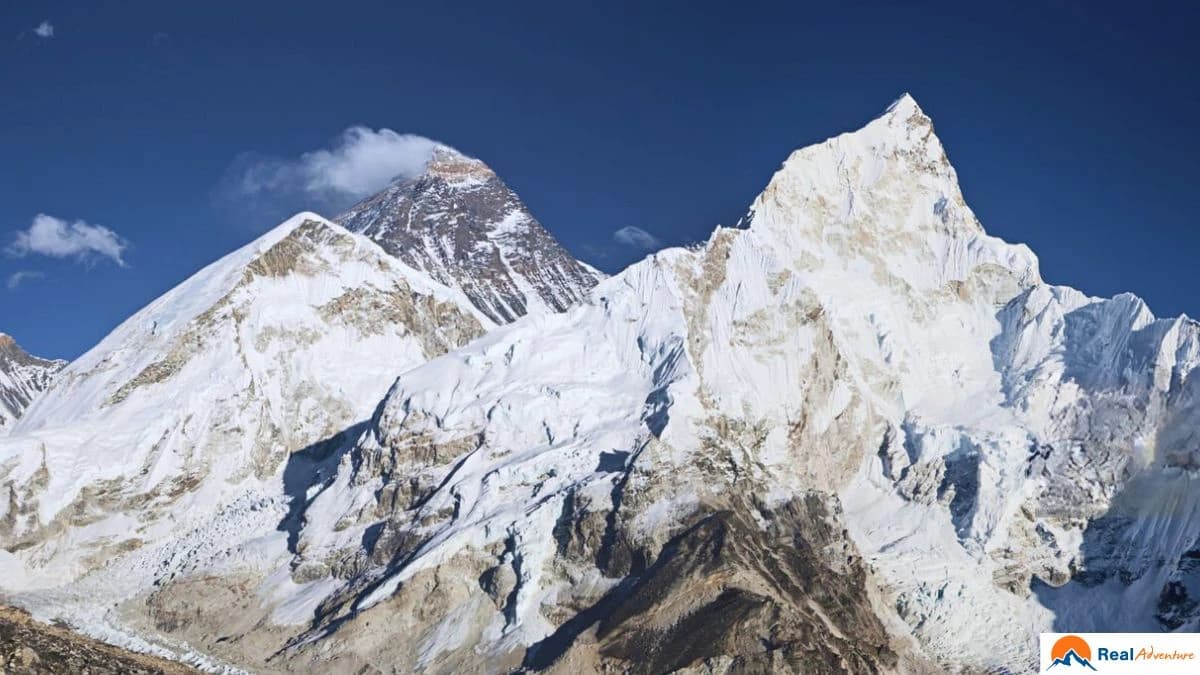

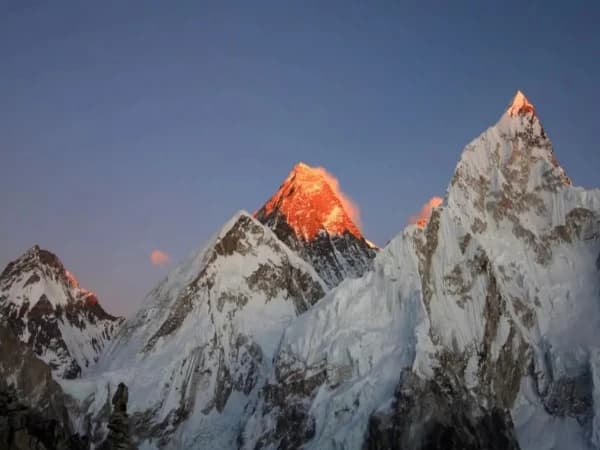
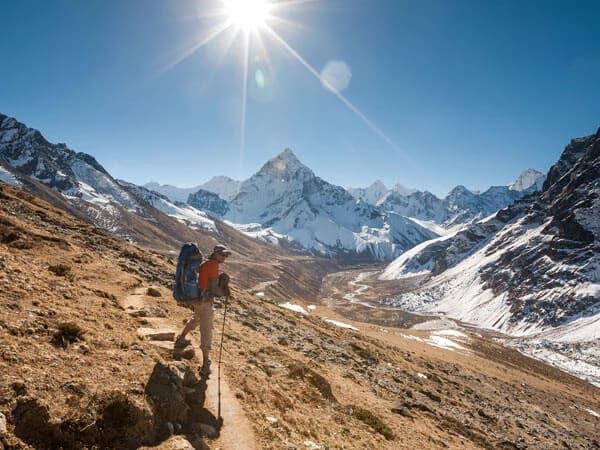
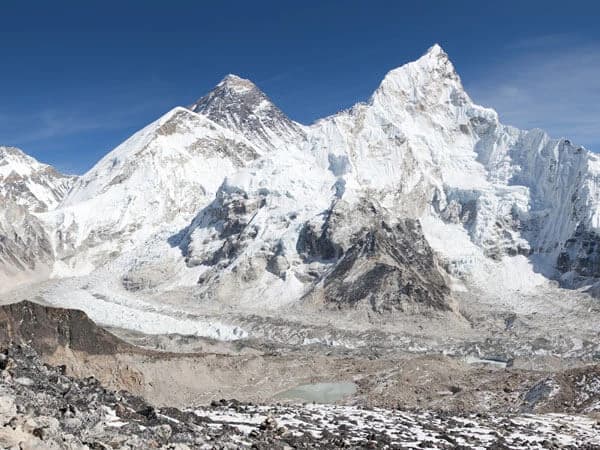
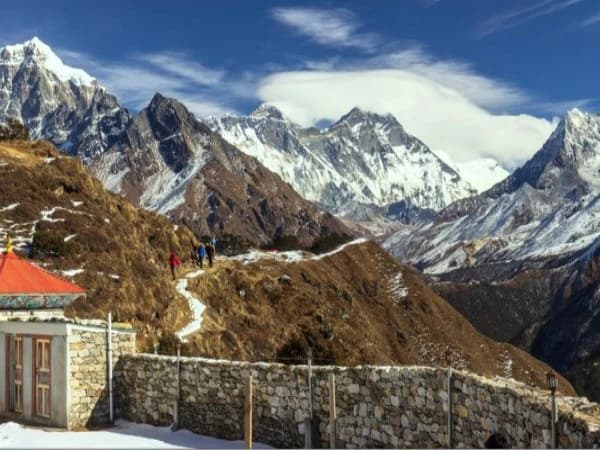
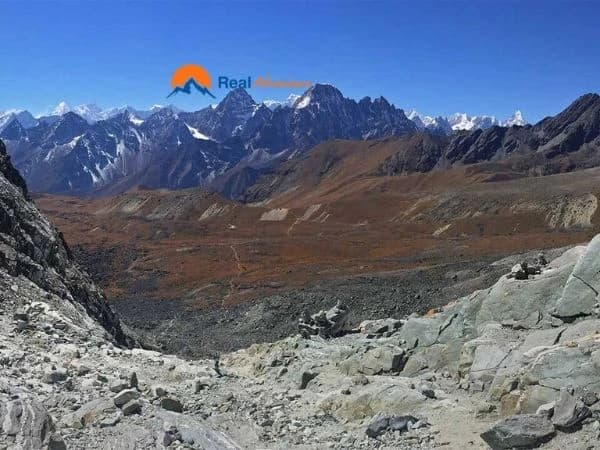
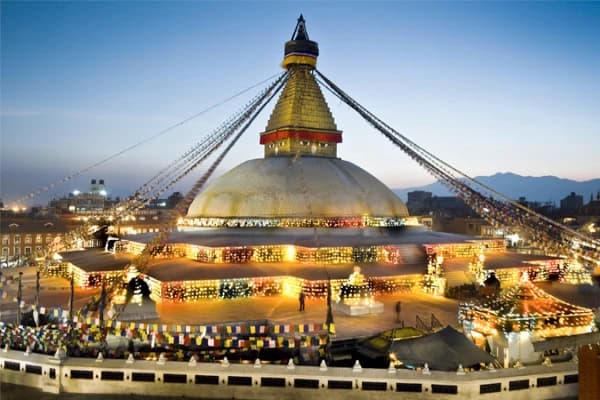
-(5).webp&w=1200&q=75&dpl=dpl_CtNAyRzUAwPdWKDCFxYk5p2VryPh)
